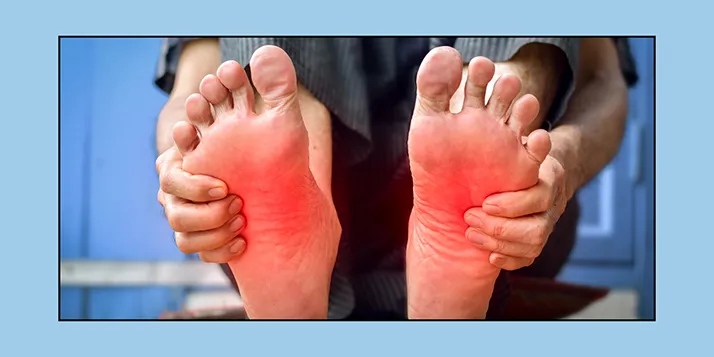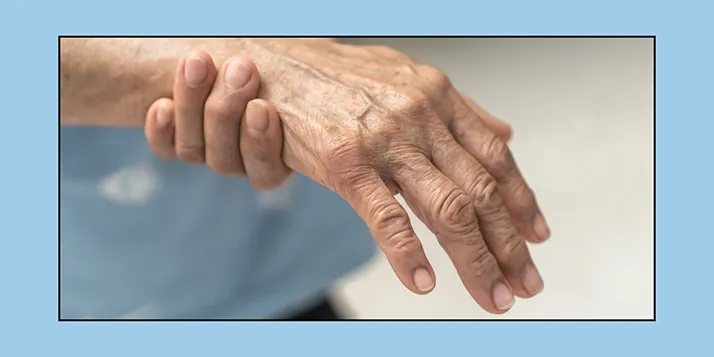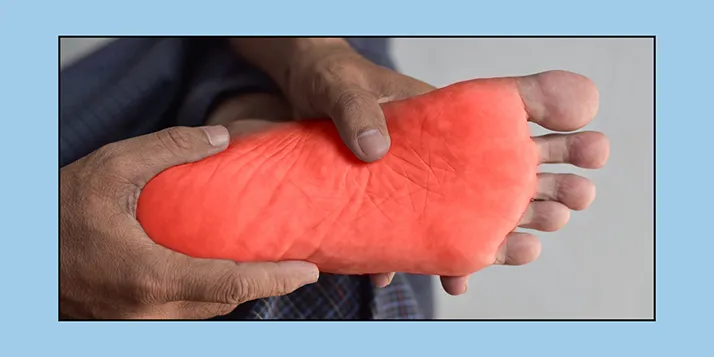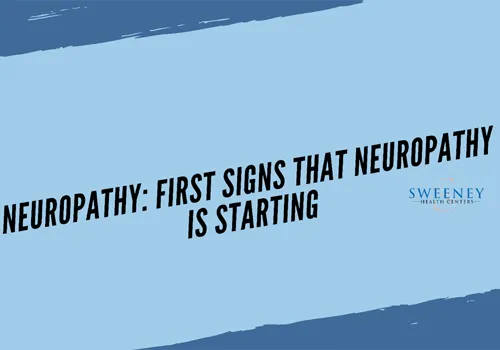Neuropathy: First Signs That Neuropathy Is Starting
Neuropathy: First Signs That Neuropathy Is Starting
Neuropathy is a complex and multifaceted medical condition, marked by the damage to nerves outside the central nervous system, which manifests through a diverse spectrum of symptoms ranging from mild tingling sensations to severe pain and disability. The nature and severity of these symptoms can vary widely among individuals, making neuropathy a particularly challenging condition to diagnose and manage effectively.
Early detection and diagnosis are crucial in halting the progression of neuropathy and can significantly improve the quality of life for those affected. This comprehensive article aims to delve deeply into the early signs and symptoms of neuropathy, shedding light on the critical need for heightened awareness and proactive measures among those who may be at risk. By understanding the nuanced presentations and potential triggers of neuropathy, individuals and healthcare providers can work together towards timely interventions, thereby preventing the escalation of symptoms and preserving nerve function to the greatest extent possible.
Understanding Neuropathy in Depth
Neuropathy, widely recognized as peripheral neuropathy, is a medical condition characterized by significant damage to the peripheral nerves—those nerves that lie outside the central nervous system, which includes the brain and spinal cord. This nerve damage disrupts the normal functioning of the peripheral nerves, which play a crucial role in relaying signals between the central nervous system and the rest of the body, affecting sensory, motor, and autonomic functions. As a result, individuals with neuropathy may experience a wide range of symptoms, from mild sensory disturbances to severe motor impairments and autonomic dysfunction, depending on the type and extent of nerve damage.
The etiology of neuropathy is diverse and multifactorial, encompassing a variety of factors that can injure peripheral nerves. Diabetes mellitus is one of the most common culprits, leading to diabetic neuropathy through prolonged hyperglycemia, which damages the blood vessels that supply the nerves, thereby impairing nerve function. Other potential causes include certain infections that can directly attack nerve tissues, such as herpes zoster (shingles), HIV, and Lyme disease, as well as genetic predispositions that lead to inherited forms of neuropathy, where the condition runs in families and is passed down through genes.
Furthermore, exposure to toxins and certain medications, such as chemotherapy drugs, can induce neuropathic damage, as can nutritional deficiencies, particularly those involving vitamins B12, B1, and B6, which are vital for nerve health. Lifestyle factors, such as alcohol abuse, can also contribute to the development of neuropathy by causing nutritional deficiencies and direct nerve damage. Additionally, autoimmune diseases, where the body's immune system mistakenly attacks its own tissues, can target the peripheral nerves, leading to autoimmune neuropathies.
The symptoms and impact of neuropathy on an individual's quality of life can be profound and varied, affecting physical, emotional, and social well-being. These symptoms can range from numbness, tingling, and burning sensations in the affected areas, to more severe manifestations such as sharp, stabbing pains, muscle weakness, and loss of coordination or balance. Autonomic nerve damage can lead to dysfunctions in blood pressure regulation, heart rate, digestion, and bladder control, further complicating the condition.
Given the complexity and variability of neuropathy, understanding its underlying causes, diverse manifestations, and the ways in which it affects individual patients is crucial for devising effective management strategies. A holistic approach to treatment, which may include medication for pain relief, physical therapy to maintain muscle strength and mobility, and lifestyle modifications to address underlying causes, is essential for improving the quality of life for those living with neuropathy.

$57 New Patient
Special Offer
Recognizing the Initial Indicators of Neuropathy
The emergence of neuropathy is typically characterized by initial symptoms that are mild and easily overlooked, but progressively worsen over time, underscoring the importance of early detection for effective intervention. The spectrum of early symptoms extends beyond the commonly experienced numbness, tingling sensations, and various forms of pain to include more insidious signs that can significantly disrupt an individual's daily life. Among these, a noticeable decline in coordination and balance can pose serious challenges, making tasks that once seemed simple, like walking or holding objects, unexpectedly difficult and increasing the risk of falls and injuries.
In addition to these physical manifestations, individuals in the early stages of neuropathy may notice changes in their bodily functions, such as alterations in sweating patterns, heat intolerance, and issues with bowel or bladder control, which are indicative of autonomic nerve involvement. Some may experience a heightened sensitivity to touch, where even light pressure from clothing or bed sheets can be uncomfortable or painful, a condition known as allodynia. Others might report a feeling of wearing an invisible glove or sock, a sensory illusion that further confirms the presence of peripheral nerve damage.
These early warning signs are critical indicators of underlying nerve damage and should not be disregarded. They signal the body's distress and the potential onset of more severe neuropathic complications if left unaddressed. It is this constellation of early symptoms, ranging from sensory and motor disruptions to autonomic system irregularities, that highlights the body's intricate dependence on a fully functional peripheral nervous system.
The gradual intensification of these symptoms serves as a vital call to action for individuals to seek medical attention. A timely and thorough evaluation by healthcare professionals is imperative to diagnose the condition accurately, determine its cause, and initiate an appropriate treatment plan. Early diagnosis and intervention are key to halting the progression of neuropathy, alleviating symptoms, and preserving quality of life, making the recognition of these initial symptoms a crucial step in the management of neuropathy.
Exploring the Multitude of Risk Factors and Underlying Causes of Neuropathy
The development of neuropathy can be attributed to a broad array of risk factors and underlying causes, many of which extend well beyond the more recognized triggers such as diabetes or hereditary conditions. This complex web of potential contributors includes not only medical conditions and genetic predispositions but also encompasses a range of lifestyle choices, occupational hazards, and environmental exposures that might not be immediately linked to nerve damage. For example, individuals working in environments that subject them to prolonged periods of cold or consistent exposure to vibrations, such as those using heavy machinery or power tools, may unknowingly be at an increased risk for developing neuropathic symptoms. These conditions can lead to vasoconstriction and reduced blood flow to peripheral nerves, or direct mechanical damage, respectively, both of which can contribute to the onset of neuropathy.
In addition to these environmental and occupational factors, lifestyle choices such as alcohol consumption and smoking can play a significant role in the development of neuropathy. Excessive alcohol use can lead to nutritional deficiencies, particularly of B vitamins that are crucial for nerve health, and direct toxic effects on nerve tissue, while smoking can impair circulation, further exacerbating risks for peripheral nerve damage. Moreover, physical injuries, from acute trauma to repetitive stress injuries, can cause direct mechanical damage to nerves or secondary damage due to inflammation and scarring, leading to neuropathic conditions.
Certain medications and therapies, particularly those used in the treatment of cancer, such as chemotherapy, can also induce neuropathy as a side effect, with neurotoxic agents causing direct damage to peripheral nerves. Furthermore, systemic diseases that affect the body's organs and tissues, like kidney disorders, thyroid imbalances, and autoimmune diseases, can indirectly lead to neuropathy by altering the body's metabolic and immune environments in ways that are detrimental to nerve health.
Infections, both viral and bacterial, represent another category of risk factors for neuropathy. Pathogens such as the varicella-zoster virus, responsible for shingles, and bacteria responsible for Lyme disease, can attack nerve tissues directly or lead to immune-mediated nerve damage. Even metabolic disorders beyond diabetes, such as those leading to imbalances in electrolytes or organ dysfunctions, can create physiological conditions that are harmful to nerve function.
Given this intricate network of risk factors and causes, a comprehensive and holistic approach to evaluating an individual's risk profile is essential. This should take into account not only their medical history and genetic predispositions but also their lifestyle, occupational exposures, and environmental interactions. Such a detailed assessment is critical in crafting personalized and effective strategies for the prevention and management of neuropathy, aiming to mitigate the impact of known risk factors and address potential underlying causes before significant nerve damage occurs.

Unraveling the Complexities of Diagnosing Neuropathy
The journey towards accurately diagnosing neuropathy is intricate and layered, requiring a nuanced understanding of the myriad forms and origins of nerve damage. The initial step in this diagnostic odyssey often involves a thorough patient history and physical examination, where healthcare professionals meticulously gather information about symptoms, their onset, progression, and any potential risk factors or exposures that might have contributed to the condition. This foundational assessment is crucial in guiding the subsequent diagnostic pathway and framing the clinical suspicion of neuropathy.
Following this preliminary evaluation, a series of specialized tests and examinations are employed to delve deeper into the nature and extent of the nerve damage. Electrophysiological tests, such as nerve conduction studies (NCS) and electromyography (EMG), play a pivotal role in this phase, offering invaluable insights into the electrical functioning of nerves and muscles. NCS can reveal how well electrical signals are traveling along nerves, pinpointing areas of damage and dysfunction, while EMG assesses the electrical activity in muscles, indicating whether nerve or muscle problems are causing weakness or paralysis.
In addition to these functional tests, blood tests are often conducted to search for underlying conditions that might be driving the neuropathic symptoms. These can include checks for diabetes, vitamin deficiencies, thyroid dysfunction, and indicators of autoimmune diseases, among others. The results can provide critical clues to the underlying systemic or metabolic disorders that often accompany or precipitate neuropathic conditions.
For a more granular view of the nerves and surrounding tissues, advanced imaging techniques such as Magnetic Resonance Imaging (MRI) and Computerized Tomography (CT) scans are increasingly leveraged. MRI, with its exceptional detail in soft tissue contrast, is particularly adept at identifying compression or entrapment of nerves, as well as other structural abnormalities that might be contributing to neuropathic pain. CT scans, while offering a different imaging perspective, can also be instrumental in diagnosing conditions that affect nerve tissue, especially in complex anatomical regions.
In certain cases, a nerve biopsy may be considered to obtain a definitive diagnosis, especially when the cause of neuropathy remains elusive after other testing. This invasive procedure involves the removal of a small section of peripheral nerve tissue for microscopic examination, providing a direct look at the changes within the nerve fibers. While not commonly performed due to its invasive nature, a nerve biopsy can be decisive in diagnosing certain types of neuropathy that may not be identifiable through less invasive means.
This multi-tiered approach to diagnosing neuropathy, from initial clinical evaluation to sophisticated testing and imaging, underscores the complexity of accurately identifying the specific type and cause of neuropathy. Each step, informed by the preceding one, narrows down the possibilities and hones in on the precise nature of the nerve damage, ultimately guiding the development of a targeted and individualized treatment plan. Through this meticulous and comprehensive diagnostic process, healthcare providers can better tailor interventions to the unique aspects of each patient's neuropathic condition, enhancing the potential for successful management and improved outcomes.
Comprehensive Strategies for Managing Neuropathy
Effectively managing neuropathy requires a holistic and individualized strategy that addresses both the symptoms and the root causes of nerve damage. This intricate approach combines conventional medical treatments with an array of alternative and supportive therapies, ensuring a broad-based response to the multifaceted challenges posed by neuropathy.
Medical treatments form the cornerstone of neuropathy management, with medications such as pain relievers, anti-seizure drugs, and antidepressants commonly prescribed to mitigate the pain and discomfort associated with nerve damage. These medications can help manage the diverse symptoms of neuropathy, from dull aches to sharp, shooting pains, by altering the way the brain perceives pain or by improving nerve function. For cases where neuropathy stems from specific underlying conditions like diabetes or vitamin deficiencies, targeted treatments aimed at controlling these conditions are crucial. By managing blood sugar levels in diabetes or supplementing deficient vitamins, it's possible to slow the progression of neuropathy and, in some cases, improve nerve function.
Beyond pharmacological interventions, a wide range of alternative therapies offers additional avenues for relief and recovery. Acupuncture, an ancient practice rooted in traditional Chinese medicine, has gained recognition for its effectiveness in reducing neuropathic pain by stimulating specific points on the body to release natural painkillers and improve nerve function. Massage therapy, another complementary treatment, can enhance circulation, reduce stress, and alleviate muscle tension associated with neuropathy, promoting overall well-being and pain relief.
Biofeedback is an innovative technique that teaches individuals to control physiological processes such as muscle tension, heart rate, and blood flow, which can be particularly beneficial for those with neuropathy. By becoming more attuned to their body's responses, patients can learn to modulate their pain and discomfort, gaining a sense of control over their symptoms. Similarly, physical therapy plays a pivotal role in managing neuropathy by strengthening muscles weakened by nerve damage, improving mobility, and reducing the risk of injuries due to falls or accidents.
Nutritional counseling and lifestyle modifications also hold significant promise in the management of neuropathy. A balanced diet rich in nutrients essential for nerve health, coupled with lifestyle changes such as quitting smoking and reducing alcohol intake, can have a profound impact on the progression and severity of neuropathy. Regular exercise, tailored to the individual's capabilities, can improve blood flow to peripheral nerves, enhance overall physical function, and contribute to pain management.
For individuals grappling with the emotional and psychological toll of living with chronic pain, counseling and support groups offer invaluable resources. These supportive environments provide a platform for sharing experiences, coping strategies, and emotional support, fostering a sense of community and resilience among those affected by neuropathy.
This comprehensive and nuanced approach to managing neuropathy, blending medical and alternative therapies with lifestyle and psychological support, ensures a more rounded and effective response to the condition. By addressing the physical, emotional, and psychological aspects of neuropathy, this multi-pronged strategy enhances the quality of life for individuals living with this complex condition, paving the way for a more manageable and hopeful path forward.

Implementing Comprehensive Strategies for Neuropathy Prevention
The prevention of neuropathy requires a proactive and multifaceted strategy aimed at maintaining optimal nerve health and minimizing risk factors that can lead to nerve damage. This approach encompasses a variety of preventive measures, from regular medical screenings to ergonomic and lifestyle adjustments, each playing a crucial role in safeguarding nerve function.
Regular medical check-ups and screenings are fundamental to the early detection and prevention of neuropathy, particularly for those at higher risk due to underlying health conditions like diabetes, autoimmune diseases, or a family history of neuropathic disorders. These screenings can include comprehensive blood tests to detect nutritional deficiencies, metabolic disorders, or signs of systemic diseases that may contribute to neuropathy. Additionally, nerve conduction studies and electromyography can be employed to assess the electrical activity of muscles and the speed of nerve signal transmission, identifying early signs of nerve dysfunction before significant symptoms manifest.
In the realm of daily activities and professional environments, ergonomic practices play a pivotal role in preventing neuropathy. Proper ergonomic setups in the workplace, such as adjustable chairs, desks at appropriate heights, and keyboard trays, can significantly reduce the strain on nerves and muscles, thereby preventing conditions like carpal tunnel syndrome and ulnar nerve entrapment. Moreover, incorporating regular breaks and stretches into the workday can alleviate prolonged pressure on nerves and enhance circulation, further reducing the risk of nerve damage.
Lifestyle modifications are another critical component of neuropathy prevention. A balanced diet rich in vitamins and minerals, particularly B vitamins, vitamin E, and omega-3 fatty acids, supports nerve health and can prevent deficiencies that lead to neuropathy. Regular physical activity improves blood flow to peripheral nerves, supporting their function and regeneration, while also contributing to overall health and the management of conditions like diabetes and obesity, which are significant risk factors for neuropathy.

Avoiding exposure to toxins and harmful substances is also essential in preventing neuropathy. This includes limiting alcohol consumption, which can lead to nutritional deficiencies and direct nerve damage, and avoiding exposure to heavy metals and industrial chemicals, both in personal and occupational settings. For individuals prescribed medications known to have neurotoxic effects, regular monitoring and consultations with healthcare providers can ensure that the benefits of the medication outweigh the risks of neuropathy.
Additionally, managing chronic stress and maintaining good mental health are increasingly recognized as important factors in preventing neuropathy. Chronic stress can exacerbate inflammatory responses and disrupt the body's natural healing processes, potentially contributing to the development of neuropathic conditions. Practices such as mindfulness, meditation, and yoga, along with professional mental health support, can mitigate stress and its negative impact on nerve health.
This comprehensive approach to preventing neuropathy, integrating medical screenings, ergonomic adjustments, lifestyle changes, toxin avoidance, and stress management, offers the most effective strategy for maintaining nerve health and preventing the onset of neuropathic conditions. By addressing the multifactorial nature of neuropathy and its diverse risk factors, individuals can take proactive steps to protect their nerve function and prevent the debilitating effects of neuropathy.
Catch Neuropathy Early
The early signs of neuropathy warrant immediate attention to halt its progression and alleviate symptoms. Understanding the nuances of neuropathy's onset, risk factors, and the comprehensive strategies for diagnosis, management, and prevention can empower individuals to take charge of their nerve health. Regular engagement with healthcare professionals and adherence to a proactive health regimen are crucial steps in navigating the complexities of neuropathy.
Have questions? Sweeney Health Centers wants to help you find the answers when it comes to neuropathy. Contact us today.



